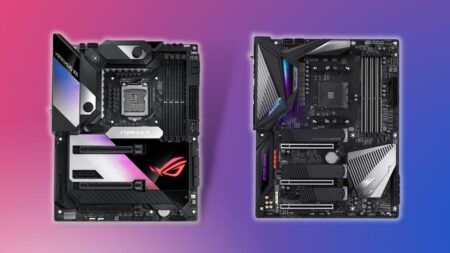If your dram light is on, it means there is a problem with your computer’s memory. This can be caused by a variety of things, such as a loose connection or bad RAM module.
In this blog post, we will walk you through the steps to fix dram light on the motherboard. We will also provide some tips to help prevent this from happening in the future.
How to Fix Dram Light Issue on Your Motherboard?
To find the source of the problem, unplug all connections to the motherboard. This includes add-in devices like GPUs, RAMs, and storage devices.
You can also disconnect all case parts connected to the motherboard. If your computer still won’t start up, try plugging in just one RAM stick into the motherboard since it needs that in order to turn on. If that doesn’t work, try another RAM stick.
If your motherboard is having issues with an orange light, you may be able to solve the problem by removing and resetting your RAM.
If your system isn’t detecting your RAM correctly, it’s possible that you didn’t insert it properly. You can clean the slot using a blower or rubbing alcohol, but make sure you scorch the RAM before installing it into its slot.
After you’ve reset the RAM, try booting up your computer again. If the problem persists, it’s likely that you have a faulty RAM module and will need to replace it.
If the above solution doesn’t fix your problem, you could try using a different PCIe slot on your motherboard. The number of PCIe slots on your motherboard varies depending on the manufacturer.
If the orange light on your GPU is illuminated, check to see if the cooling fan is operational. If not, you may need a power supply unit that can provide more wattage to solve this issue.
To prevent this from happening in the future, make sure you handle your components with care. Whenever you’re installing or removing hardware, be careful not to put too much force on the connectors. Also, make sure you’re using compatible parts. If you’re not sure whether a part is compatible with your motherboard, check the manufacturer’s website or ask a knowledgeable friend.
What Does the Light on the Motherboard Mean?
While other models do not have light indicators, some motherboards have a dram light that turns on when there is an issue with the computer’s memory.
Other models have a full display for quick diagnostics, such as MSI’s EZ Debug LED feature.
The orange light is an indication that something is wrong with the Motherboard or a hardware device. There is no software bug or OS malfunction. Also, if you purchase a PSU that is not 80 plus bronze or higher, you may not get stable power to your Motherboard and its components.
What Are Red Lights on a Motherboard?
The four leading indicators are pins that correspond with different parts of the computer, and they’re located on both newer as well as older board models. These parts are CPU, DRAM, VGA and BOOT.
If it’s CPU specifically, then this means that there may be an issue with the Motherboard not being able to recognize the CPU due to a pin bending or incorrect plugging.
A red light next to the DRAM indicator means that the RAM stick wasn’t put in correctly. You can tell if it’s not seated properly if the side clamps are loose.
If you’re seeing a red light next to the VGA or GPU indicator, that means that your graphics card hasn’t been properly detected or seated. A red light next to the BOOT indicator signifies an issue with the hard drive – which just so happens to be where your operating system is stored.

